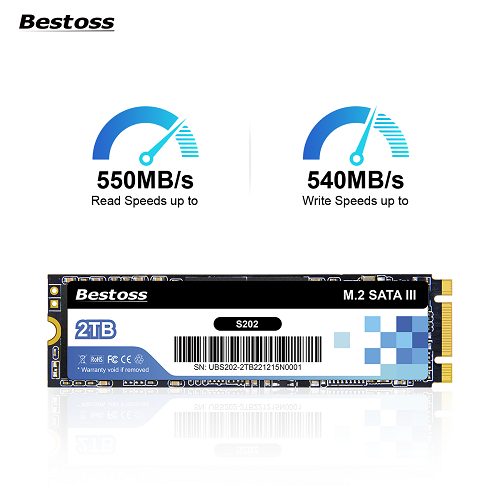News
Site Editor
 Site
https://ution-best.usa02.wondercdn.com/uploads/image/68fc937b79cd2.png
The introductory section will offer a comprehensive backdrop of the technological landscape in international business, emphasizing the role of digital data in foreign trade operations. The focus will then shift to external storage solutions, especially the emergence of 1TB external SSDs. Here, we'll explore how SSDs are revolutionizing data transfer speeds and security measures critical to B-end users. The narrative will also underscore the progressive transition from traditional storage devices to more robust and reliable SSDs in facilitating large-scale transactions and the sharing of sensitive information across borders.
Site
https://ution-best.usa02.wondercdn.com/uploads/image/68fc937b79cd2.png
The introductory section will offer a comprehensive backdrop of the technological landscape in international business, emphasizing the role of digital data in foreign trade operations. The focus will then shift to external storage solutions, especially the emergence of 1TB external SSDs. Here, we'll explore how SSDs are revolutionizing data transfer speeds and security measures critical to B-end users. The narrative will also underscore the progressive transition from traditional storage devices to more robust and reliable SSDs in facilitating large-scale transactions and the sharing of sensitive information across borders.
1TB External SSD: Apps Shift, Data Perks & Essential Care Tips
Views: 991
Author: Site Editor
Publish Time: 2024-01-05
Origin: Site
1TB External Solid State Drive (SSD) Application Field and Data Characteristics Changes
Application Field Changes
From Professional Users to Ordinary Consumers
At first,1TB external solid-state drives were mainly targeted at professional users such as photographers, video editors and game developers. They need high-speed and large-capacity storage devices to handle large files and complex projects.
Now, with the advancement of technology and the decline in prices, 1TB external solid state drives have gradually entered the field of vision of ordinary consumers and become an ideal choice for daily data backup, game storage and multimedia content management.
From desktop to mobile devices
At first,Initially, external SSDS were mainly used in desktop computers or workstations as additional storage or backup devices.
Nowadays, with the popularity of mobile devices such as laptops and tablets, 1TB external SSDS have become powerful assistants for mobile office work, study and entertainment due to their small size, portability and fast transmission speed.
From single storage to multi-functional applications
In the early days: external solid state drives were mainly used for data storage and had relatively limited functions.
Today: With the continuous development of technology, external solid-state drives (SSDs) have begun to support more functions, such as encryption protection, cloud synchronization, cross-platform compatibility, etc., to meet the diverse needs of users.

Data characteristics
High speed
SSDS use flash memory technology, and its read and write speeds are faster than HDDS,which is traditional mechanical hard drives, it can significantly improve data transmission efficiency. This is particularly important for users who need to frequently read and write large files.
Large capacity, portability
The capacity of 1TB is enough to meet the needs of most users, and SSDs are small and light, making them very suitable for carrying and mobile use.
Security
Solid-state drives have no mechanical components, so it is better shock and drop resistance and a lower risk of data loss. In addition, some high-end solid-state drives also support hardware encryption functions, providing additional security guarantees for data.
Low power consumption and silent
The power consumption of solid-state drives (SSDs) is much lower than that of mechanical hard disks (HDDs), and they are almost silent when running, which is an important advantage for users who need to use external storage devices for a long time.
Maintenance of 1TB External SSD
Avoid physical damage
Although SSDs are more durable than HDDs, physical damage such as severe vibration, falling, or squeezing should still be avoided. When carrying or moving SSDs, a dedicated protective box should be used.
Back up data regularly
Despite the high reliability of SSDs, any storage device is prone to failure. Therefore, it is recommended to regularly back up important data to other storage devices or cloud storage just in case.
Use power management correctly
For SSDs that support power management, you can set them to sleep or standby mode when not in use to extend battery life and reduce energy consumption. But at the same time, please avoid frequent sleep and wake-up operations to avoid unnecessary burden on the SSD.
Avoid extreme temperatures
SSDs have certain temperature requirements. Too high or too low temperatures will affect the performance and service life of solid-state drives (SSDs). Therefore, when using solid-state drives (SSDs), it is recommended to avoid exposing them to extreme temperature environments as much as possible.
Update firmware regularly
Manufacturers may periodically release firmware updates for your SSD to fix known issues, improve performance, or add new features. It is recommended to regularly check and update the firmware of your SSD to ensure it is in optimal condition.
Use genuine software and drivers
When connecting your SSD to your computer, it is recommended to use genuine operating systems and drivers to ensure compatibility and stability of the device. Avoid using software or drivers from unknown sources to avoid damaging your SSD.

